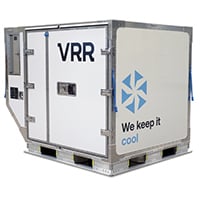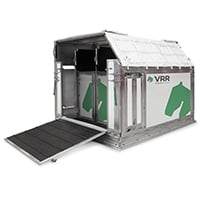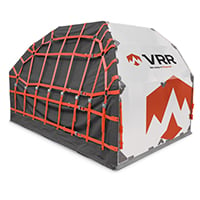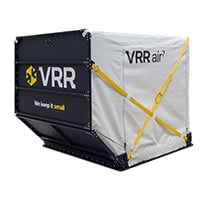ULDs are built to withstand extreme conditions. They have to be. They’re constantly being loaded on and off aircrafts, put onto rolling dollies, picked up by forklifts and subjected to all kinds of weather.
So, despite their tough exterior, they can and do get damaged. Once that happens, they’re at risk of being declared ‘not airworthy’. In other words, they may no longer be structurally capable of restraining cargo within an aircraft’s hold or providing adequate protection to the aircraft systems and structure during flight.
One of the best ways of improving the performance and lifespan of your ULDs is to have them repaired and maintained by a certified repair facility, so we decided to get a little insight from David Steur, the manager of VRR’s repair station near Schiphol Airport.
David, who’s been with us since 2006, has 25 years of experience in repairing ULDs and often passes on his observations to our designers and engineers in Rotterdam.
David, your repair facility is EASA Part 145 approved. What does that mean?
Basically, it means that we meet EASA’s standards as a repair and maintenance station for aircraft components and we use original parts provided by the OEM (Original Equipment Manufacturer). Most owners aren’t qualified to repair ULDs themselves, and they can’t send them to any repair facility.
If you send your ULD to us, you can be sure we’ll repair it to the standards enforced by the European Aviation Safety Agency. That’s important because ULDs are actually aircraft parts. A lot of people forget that.
What sort of repairs do you carry out and what's the most common types of damage that you see?
We repair all kinds of ULDs , from 20-ft pallets and horse ULDs to cargo containers, car loaders and temperature-controlled cool containers. You name it, we repair it.
We even repair catering equipment like trolleys and galley inserts for passenger aircrafts. You know, the ones that are used to serve food and beverages to passengers during a flight. These are used every day, so they get quite a bashing. We’re often replacing trolley wheels here.
I’d say the most common types of damage that we see are holes in panels and frames bent out of shape. And, unfortunately, that’s down to incorrect handling, especially with forklifts. Forklift drivers might pick up the container in the wrong way or push the container to a different position with the forks while the container is still loaded. That’s really bad for any ULD.
How many ULDs do you repair each week on average?
Because of the pandemic, we have less work at the moment. But, normally, we repair between 20 and 40 ULDs a week. Some are delivered to us and some we collect from our customers, so we never know what’s coming in.
Either way, we try to repair them as fast as possible.
I have a saying that a damaged ULD is just like a car with a flat tyre: it never happens when it’s convenient and you always need it fixed in a hurry. In other words, we have to repair ULDs quickly, efficiently and to the highest of standards. And since we’re a smallish team—there’s between eight and ten of us—that keeps us busy.
Are some containers more complicated to fix than others?
I would say so. There’s a lot of difference between ULDs, even when they’re the same type. Repairing the RKN container, for example, is entirely different to repairing the RGX, which is much, much bigger. Yet they’re both cool containers.
But it’s not just the ULD type that makes a difference. There’s also the age factor. Some containers that come in are only five days old; others are 25 years old. The older ones are usually trickier to repair.
Sometimes we get containers that are too old to be repaired. By that I mean the material that needs to be replaced isn’t in stock anymore.
If that’s the case, we advise the owner to stop using the container because—one—it can’t be made airworthy again and—two—it would be too expensive to fix anyway.
In your opinion, what would prevent most of the damage you see to ULDs?
Preventative training for the handlers would be really helpful. Also, employee commitment. It’s well known in the industry that a lot of temporary staff work for ground handlers, so training them is not always a priority. That’s a pity because it would make a big difference to the way they look after ULDs.
Another way to get your ULDs to last longer is to buy those that are built to a high standard. Cheap ones never last as long because they don’t use quality materials or parts, so they don’t stand up so well to the rough life of a ULD.
Luckily, many repair costs can be avoided. Handling ULDs with care during transport is one way. But the smartest thing to do is send a damaged ULD immediately to a repair station. This will prevent further damage. In the end, that’s much cheaper than fixing a container that has been damaged multiple times.
Many thanks to David for sharing his perspective on repairing ULDs and the role that training and quality materials has in extending the life of a ULD. If you’d like to know more about our repair service, you can drop him a line at david@vrr.aero. You can also learn more about the costs of owning a ULD.

